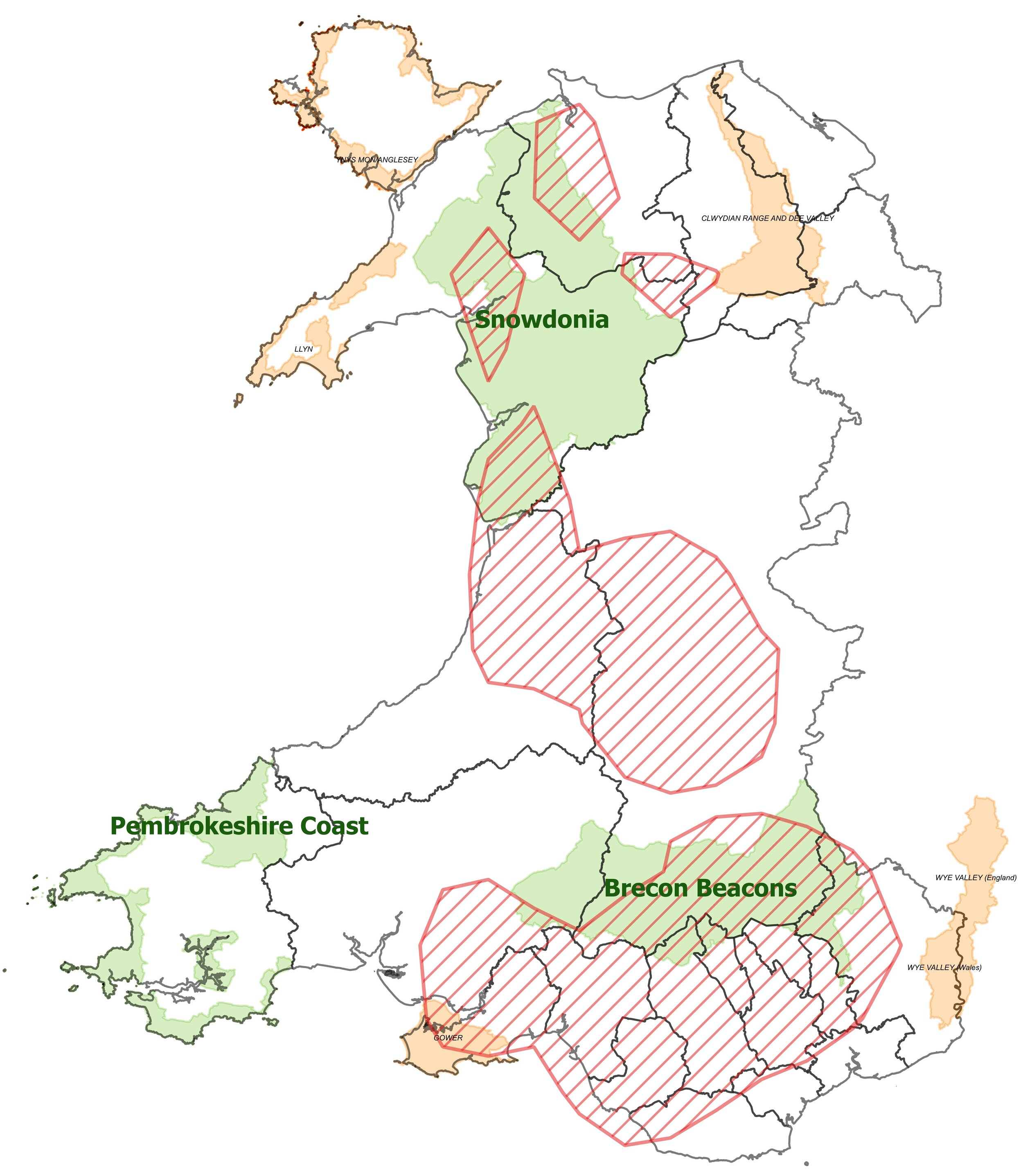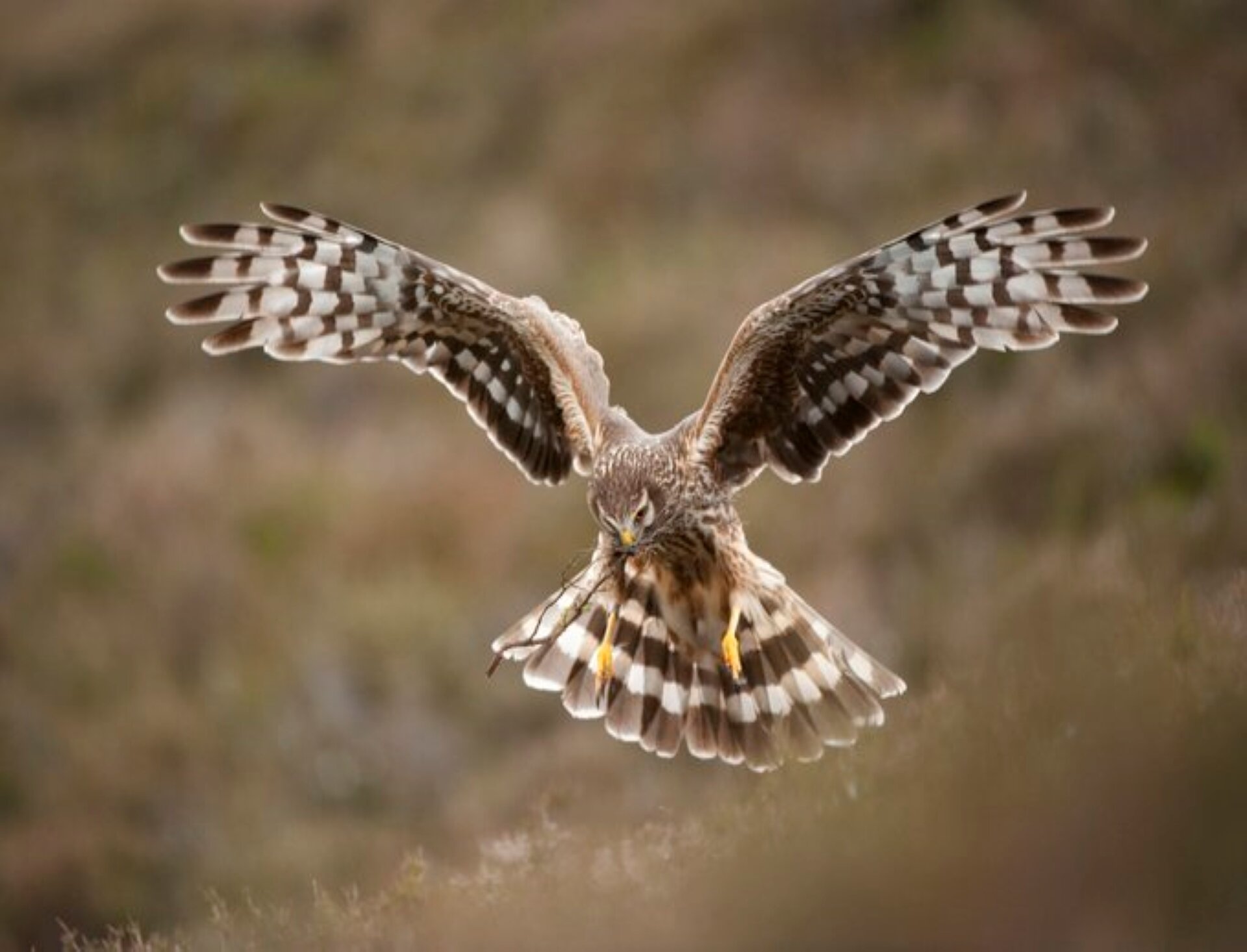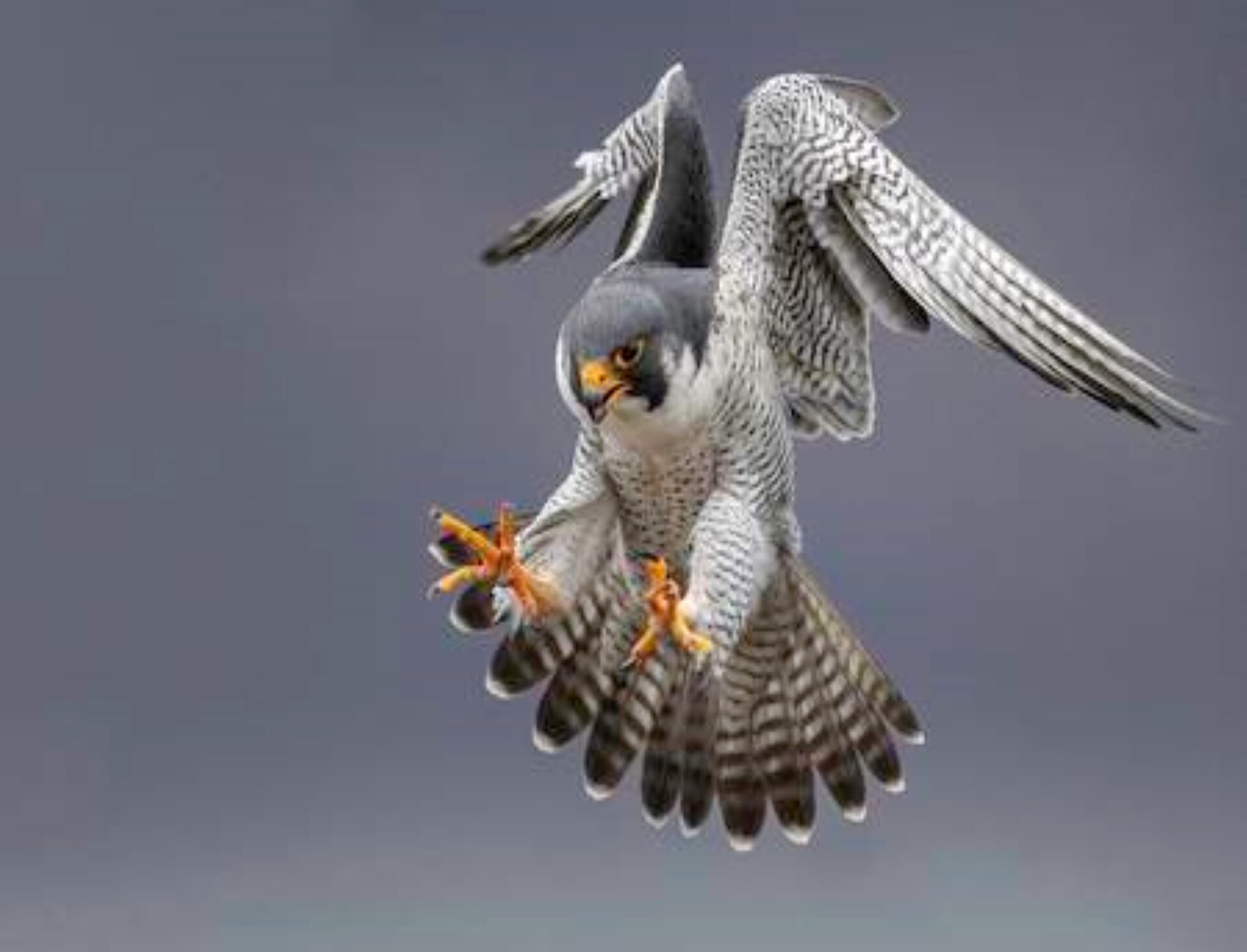Birds of Prey in Wales
Published: 24th July 2020
The core breeding range of Welsh Ospreys (Gweilch)
The core breeding ranges of Welsh Red Kites (Barcud Coch)
Much of last year was spent surveying Wales and its birds of prey. These surveys were mostly conducted by two Master project students at Cardiff University - Sam Langdon and Zoe Marie Jones. Zoe and Sam spent much of their time roaming around Wales gathering data on our Welsh birds of prey. As many of us are now working from home, we have now found time to update you on our research.
Monitoring our birds of prey in Wales is an important part of our research to restore the Golden Eagle (Eryr euriad) and White-tailed Eagle (Eryr y mor) to Wales. Why? Might you ask. Well … Wales does not have a Raptor Monitoring Group, so information on how birds of prey use the Welsh landscape is not well understood. As part of our journey to restore our native-lost eagles to Wales, this information was something we needed to gather! We decided to map the breeding ranges of five birds of prey populations that share behavioral, dietary or nesting requirements with eagles - to gain insight to how eagles would use the Welsh landscape. We mapped the breeding ranges of Hen Harriers (Hen Tinwyn), Common Buzzards (Bwncath Gyffredin), Peregrine Falcon (Hebog Tramor), and as shown above for our Ospreys (Gweilch) and Red Kites (Barcud Coch).
On top of Sam and Zoe efforts, we would also like to thank the Local Environmental Records Centres Wales/Canolfannau Cofnodion Amgylcheddol Lleol Cymru for providing us with relevant bird of prey data. This data allowed is to focus in on all bird of prey breeding ranges and conduct further analysis on associated habitats and anthropogenic land use avoidance. This allowed us to build comprehensive information about land uses and potential land use risks needed to further consider the feasibility of restoring our native lost eagles.
Below are the key findings from our research on ecologically similar birds of prey in Wales.
Ospreys (Gweilch)
Welsh Ospreys breed in a wide variety of habitats, nesting in areas near a water source which provides an adequate supply of fish - like White-tailed Eagles in many ways. The core breeding range for Ospreys covers 11.4% of Wales and is positioned near the coasts of north-west Wales (see above).
Our Welsh Osprey breeding range consists of mainly conifer forest, moors and heath, natural grassland and pasture habitats. There are no wind farms or persecution incidents in the breeding range of Ospreys in Wales. We also found that pastures are a prominent habitat in our Osprey breeding territories. Livestock pastures present great opportunities for some birds of prey, accommodating open expanses of land for hunting and artificial perches (posts, fences, masts etc.) to aid sit and wait hunting.
The relationship between our Welsh livestock farmers and Ospreys are positive. The positive relationship between Ospreys and farmers is a positive reassurance for the restoration of White-tailed Eagles. Rural practices like livestock farmers and their attitudes are key to the survival of our Welsh biodiversity. Eagles also require open space for hunting and may adapt to do well in agricultural landscape - the attitude of rural practices and private land owners should be a key consideration for the restoration of eagles to Wales
Osprey (Gweilch) © Jean Beaufort
Red Kite (Barcud Coch) © Karen Arnold
Red Kites (Barcud Coch)
Red Kites are the National birds of Cymru and by far have the biggest breeding range in Wales. Their core breeding range covers 35% of the Welsh landscape and is split into five core breeding ranges, encompassing large ranges in the south and mid Wales, and three small areas of North Wales (see above).
The habitat types found within Red Kite breeding ranges are mostly pastures, natural grasslands and heterogeneous agricultural areas. Red Kite breeding territories were found to overlap with urban areas, persecution incidents and small wind farms. Red Kites avoided areas with a high number of wind-farms.
Red kites mostly nest in mature trees, but it’s their scavenging behaviour that overlaps with the behaviour of eagles. Eagles are facultative scavengers and the wide distribution of Red Kites allows us to conclude that their is a sufficient amount of carrion lying around the Welsh landscape.
Hen Harriers (Hen Tinwyn)
Hen Harriers predominately nest on the ground across upland heath and moors in Wales. The species core breeding range covers approximately 10.7% of the Welsh landscape and is centered in North Wales.
Hen Harriers Welsh breeding range mainly consists of moors and heath, peat bog and natural grassland habitats. They were found to actively avoid woodlands and pastures - perhaps reflecting their requirements for open landscapes and medium length vegetation for hunting and nesting. There were no persecution incidents or wind farms recorded in the breeding range of Hen Harriers.
Livestock pasture is an important form of land use in Wales. Small-scale livestock grazing and low sheep numbers are two characteristics that influence the presence of our Welsh Hen Harriers and their prey (e.g. small mammals and upland birds).
The Golden Eagle is also associated to upland habitats and require open landscapes and medium length vegetation for hunting. Upland habitat quality and its indirect effects on prey availability is a key consideration for the restoration of our Welsh Golden Eagles.
Female Hen Harrier (Hen Tinwyn) © Mark Hamblin
Common Buzzard (Bwncath Gyffredin) © Omar Alshaheen
Common Buzzards (Bwncath Gyffredin)
The Common Buzzard is less of a habitat specialist than the Hen Harrier and is known to breed in a number of different habitats - rendering them as extreme generalists. The Buzzards core breeding range covers approximately 30% of the Welsh landscape and is split into two distinct ranges; one large range in the South and another in the North, extending into the Isle of Anglesey.
The main habitats associated to the Buzzards breeding range mostly consisted of pastures, moors and heath, conifer forests and peat bogs. We found that they prefer to nest in areas over 150 m above sea level - perhaps linked to the birds choice to nest in upland crags and conifer plantations. Due to the Common Buzzards ability to nest in a variety of habitats types across Wales, their territories often found to overlap with urban areas and areas with recorded persecution incidents.
Breeding Buzzard territories were not found in areas with more than six wind-turbines. Buzzards are a soaring bird, like Golden and White-tailed Eagles, and their breeding distribution was found to be influenced by the distribution of wind farms across Wales. As both species of eagles are also habitat generalists and are characterized with slow flight maneuverability, higher wing loading and dependent on thermals or wind for flight - the proportion of suitable habitat potentially lost by the distribution of wind farms should be an important decision for any eagle restoration in Wales.
Peregrine Falcons (Hebog Tramor)
The Peregrine Falcon does breed in urban areas, but are more abundant in their natural habitats across Wales. Their core breeding range covers 27% of Wales and is very similar to the Common Buzzards. Their range encompasses of much of the urban and coastal areas of South and south-west Wales and North and north-west Wales, extending into the Isle of Anglesey.
The Peregrines Welsh breeding range mainly consists of urban areas, salt marsh, coastlines, inter-tidal flats, inland marshes, coastal lagoons, inland water bodies and beaches and dunes. The natural breeding distribution of Peregrines across the coastlines of Wales, provides us with the indication that there is ample food supply in these regions. The Peregrines diet and nesting preferences overlap with both the Golden and White-tailed Eagle - this information will contribute towards the consideration of the best release sites for eagles in Wales.
The Peregrines breeding territories were not placed in close proximity to any persecution incidents, but did overlap with wind farms. Across Wales, persecution incidents are usually recorded across inland areas, leaving our coastlines mainly persecution free areas. A promising insight for the restoration of White-tailed Eagles. The Peregrine Falcon, unlike eagles, use powered flight to escape the risk of turbine collisions and do not suffer from wind farm displacement - explaining why the Peregrine Falcons breeding range overlaps with a high number of wind farms across Wales.
Peregrine Falcon (Hebog Tramor) © Harry Collins
White-tailed Eagle © Jeff Smith
Take Home Message








